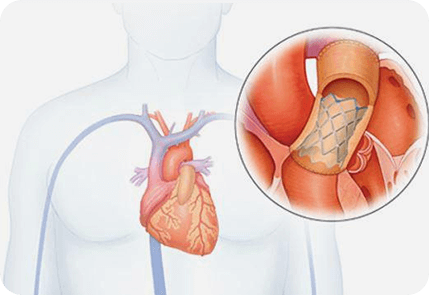 secretary@gopalamurugan.com
secretary@gopalamurugan.com +91 80560 88898
+91 80560 88898
+91 89400 88898
+91 91760 88898
 Scan QR Code
Scan QR Code
for Location
 secretary@gopalamurugan.com
secretary@gopalamurugan.com +91 80560 88898
+91 80560 88898 
 Scan QR Code
Scan QR Code 
Heart conditions, especially those requiring surgical intervention at a young age, such as Tetralogy of Fallot, can lead to complications later in life. One common issue is the dysfunction of the pulmonary valve, a critical component for controlling blood flow between the heart and lungs. Traditionally, addressing this problem required another open-heart surgery, posing significant risks and challenges for patients. However, the advent of percutaneous pulmonary valve implantation (PPVI) has transformed treatment options, offering a less invasive alternative to conventional surgery.
What is Percutaneous Pulmonary Valve Implantation (PPVI)? Percutaneous Pulmonary Valve Implantation is a minimally invasive procedure designed to replace a dysfunctional pulmonary valve without the need for open-heart surgery. This innovative technique is particularly beneficial for patients who have undergone previous surgical repair of congenital heart defects, such as Tetralogy of Fallot, or those with a failing surgical pulmonary valve replacement. During PPVI, a new valve is delivered to the heart through a catheter inserted via a vein in the leg or neck, guided to the right position, and then deployed, instantly improving heart function and blood flow.
Who Can Benefit from PPVI? PPVI is ideally suited for patients who have undergone previous heart surgeries, particularly those addressing Tetralogy of Fallot or other conditions affecting the right side of the heart. It is an excellent option for individuals experiencing pulmonary valve dysfunction, which can manifest as shortness of breath, fatigue, irregular heart rhythms, or heart failure. By offering a less invasive alternative to repeat open-heart surgery, PPVI can significantly improve the quality of life for these patients, reducing recovery time and associated risks.
The PPVI Procedure: The PPVI procedure is typically performed under general anesthesia in a specialized cardiac catheterization lab. The procedure involves inserting a catheter into a vein, usually in the groin, and carefully guiding it through the vascular system to the heart. Once in position, a replacement valve attached to the catheter is deployed within the existing pulmonary valve. Advanced imaging techniques assist in ensuring precise placement and immediate function of the new valve. The procedure generally takes a few hours, and patients may be required to stay in the hospital for a short period for monitoring.
Percutaneous Pulmonary Valve Implantation represents a significant advancement in the treatment of pulmonary valve dysfunction, particularly for those with a history of congenital heart defects or previous heart surgeries. By providing a safer, less invasive alternative to traditional surgery, PPVI is changing the landscape of cardiac care, offering renewed hope and improved outcomes for patients. If you or a loved one are experiencing complications related to a previous heart condition, consult with a cardiac specialist to determine if PPVI is a suitable treatment option.
This content aims to inform and guide patients and their families about the innovative option of PPVI, enhancing their understanding and decision-making process regarding heart valve replacement solutions available on your healthcare website.